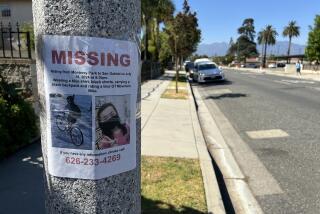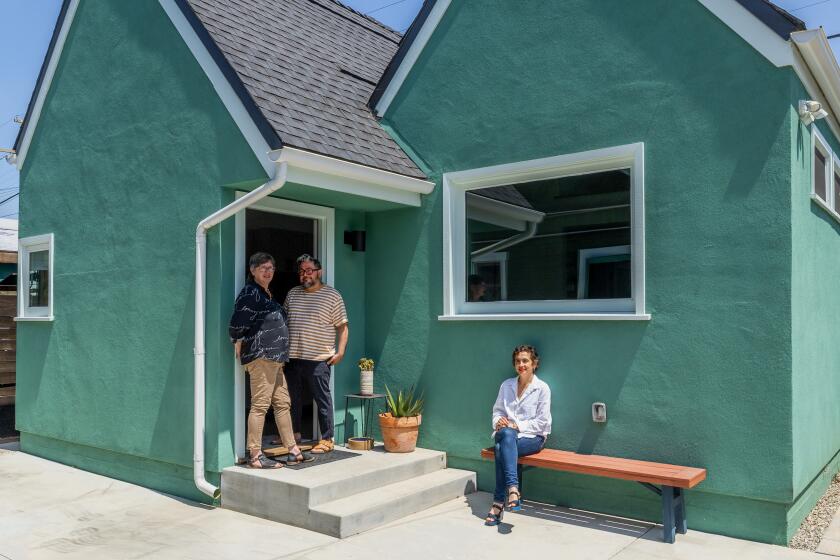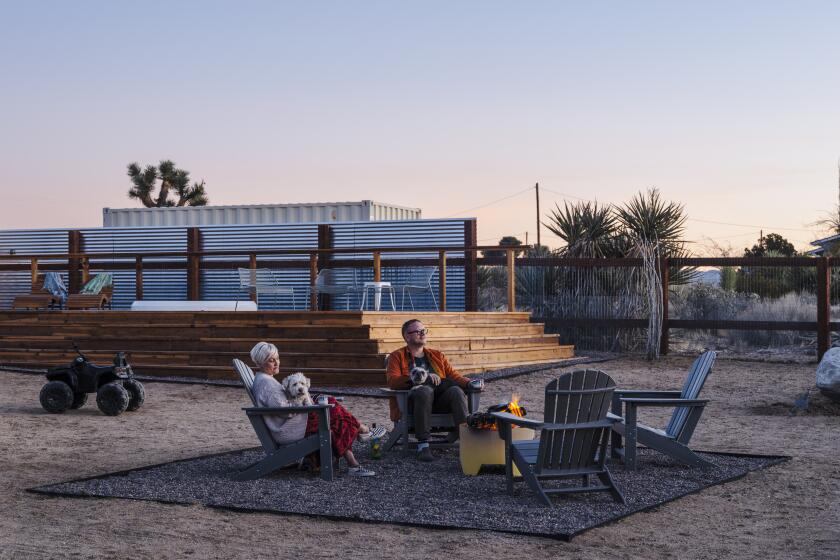Owner Calls Dilapidated Building Product of Rent Control
The red and black graffiti on John Rodriguez’s one-story, boarded-up, trash-infested building begin to tell his story:
“This is what rent control brings.”
“Amerika is already here in Soviet Monica.”
“If Big Brother can do this to me, they can do it to you.”
For years, Rodriguez has wanted to tear down the building, once a motel, then a live-in hangout for illegal aliens and now a dilapidated hiding place for transients on a prosperous commercial stretch of Santa Monica Boulevard.
Earlier this month, he finally cleared one major hurdle with Santa Monica’s Rent Control Board and moved closer to demolishing the building. But he blames the city’s rent control law, one of the toughest in the country, for making it an uphill battle all the way.
While landlords are rarely fans of rent control, Rodriguez has perhaps taken his crusade further than most by using the run-down building--he admits it is an eyesore--as a jumbo protest placard. He has painted graffiti on the walls to emphasize his political statement.
“This is living proof of the failure of rent control,” Rodriguez, 49, a member of a landlord advocacy group, said this week as he surveyed the property.
Supporters of rent control maintain its regulations, while strict, have protected low- and moderate-income tenants by guaranteeing them affordable housing in Santa Monica.
Legal Channels
Rent Control Board officials say Rodriguez’s plan to replace the former motel/apartment house with stores had to go through the standard legal channels set forth in city law.
“Our eye is always on (maintaining) the number of rental units in this city . . . affordable to low- and moderate-income earners,” said Susan Casmier, a spokeswoman for the Rent Control Board. “That is what we were voted in for.”
In 1971, Rodriguez, a barber since age 19, bought what was then the Las Palmas Motel, 14 studio units with garages. He intended to tear it down and build a barber shop and other stores in 1980, when the lease was up on the barber shop he rents on Wilshire Blvd.
Through the 1970s, he rented the units to low-income Latino families. He did so, he says, at the behest of his Mexican mother.
But in 1979, one tenant “sold” his apartment to seven Latino illegal aliens, Rodriguez says. Soon, dozens of illegals, mostly male youths, began flocking to the property, driving out the families and “taking over,” he says.
At one point as many as 14 young men were living in a unit, he says. Each unit had a “boss man” who would collect rent from the men and then pay Rodriguez the relatively small sum he had always charged, around $185 a month, Rodriguez says.
“It broke my heart. It was like they thought there had been some sort of urban land reform,” Rodriguez said. “I was subservient to them.”
That was the same year Santa Monica’s rent control law was enacted. Rodriguez decided his plans to vacate and demolish the building had to be put on hold.
Rodriguez said he began to buy back the apartments from the men, paying as much as $3,000 apiece. As the men left, he would board up each newly vacated cottage. Only four of the 14 units were inhabited by 1986 and those tenants left at mid-year.
“I wound up buying back my own apartments,” Rodriguez said. “Then I chose to keep it vacant to keep it out of the hands of illegal gangs.”
But the vacancy was only temporary. Now, despite a fence around the building, homeless vagrants have torn holes in the roof and are hiding in the apartments at night, Rodriguez says.
Inside one of the units, cigarette butts in an ash tray and tattered clothes hanging in a closet, amid piles of empty beer cans and a half-eaten bag of tortilla chips, attest to the vagrants’ presence.
Under the rent control law, landlords cannot demolish a building that serves as housing without first obtaining a special removal permit from the city’s Rent Control Board. The permit essentially allows the landowner to remove the property from the city’s housing stock. A demolition permit then has to be obtained from city building authorities.
The removal permit is granted only after a review process determines the property fits into one of four categories.
Rodriguez was granted the permit on Oct. 8 under a category that allows removal because the building is judged uninhabitable and cannot be renovated in an “economically feasible manner.”
Rent Control Board officials say requirements for obtaining a removal permit have to be stiff to protect tenants.
“The mandate of the Rent Control Board is to maintain the number of rental units (Santa Monica) has,” Casmier said. She said that as rent control was coming into law in 1979-80, a “demolition derby” ensued with landowners rushing to tear down their apartment buildings and replace them with more expensive condominiums.
The board issued 14 removal permits last year involving 63 housing units, most of which the landowners agreed to replace, Casmier said.
Under the Ellis Act voted into law by the Legislature last year, 218 rental units have been “withdrawn” from Santa Monica’s housing stock, she said. The Ellis Act allows landlords to go out of business, giving them a way to vacate their apartment buildings, something they had not been able to do in Santa Monica. The full implications of the Ellis Act in Santa Monica are still being studied, however.
Armed now with the removal permit, Rodriguez applied for a demolition permit last week. But the experience has left him bitter.
“There used to be a time you could be proud to own land. Now a bordello owner would have more respect.”
More to Read
Sign up for Essential California
The most important California stories and recommendations in your inbox every morning.
You may occasionally receive promotional content from the Los Angeles Times.







